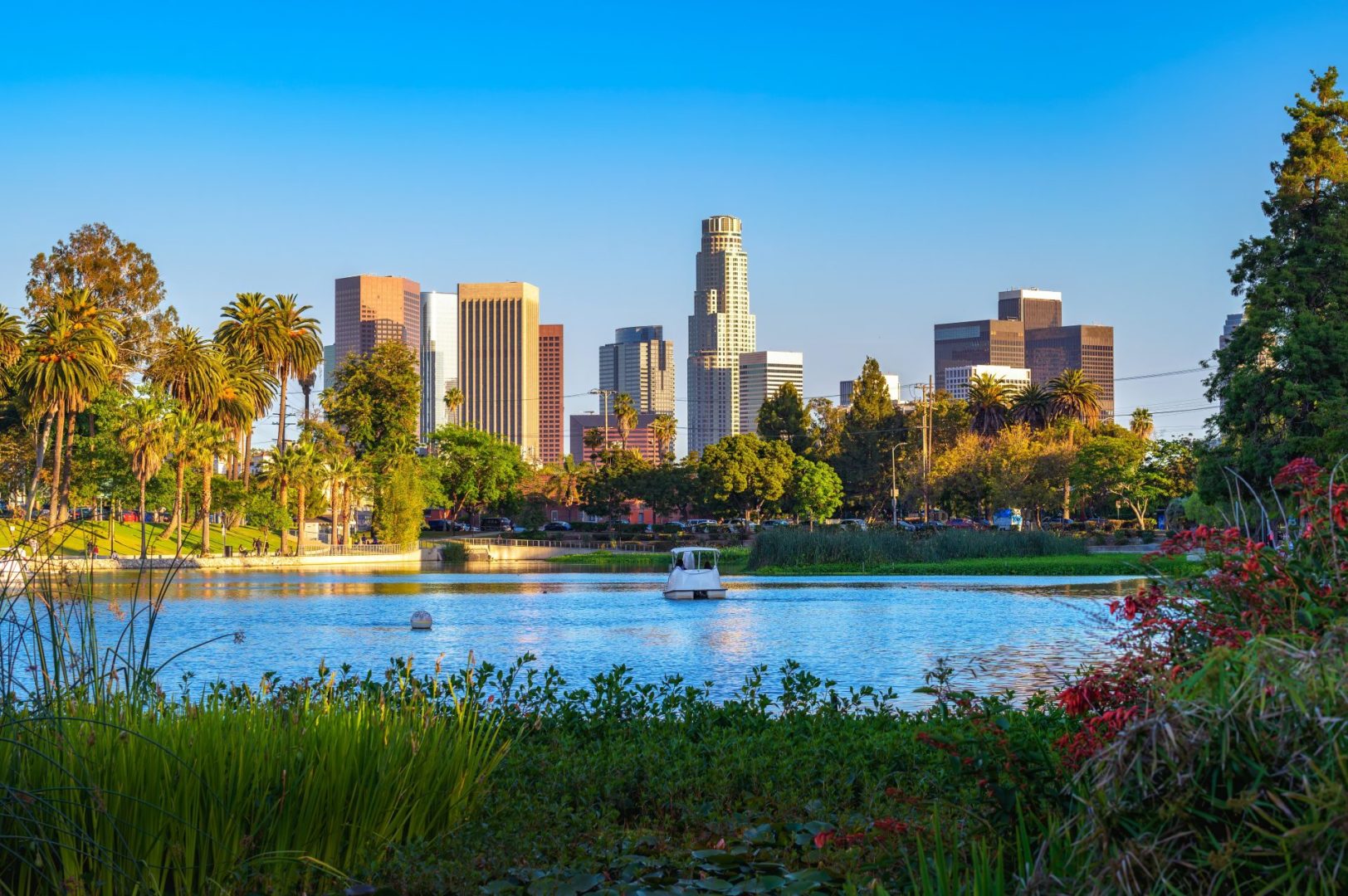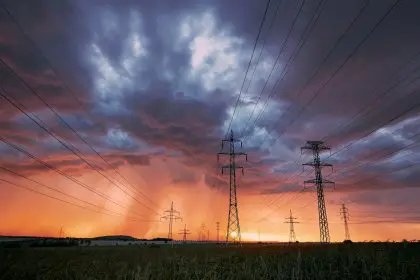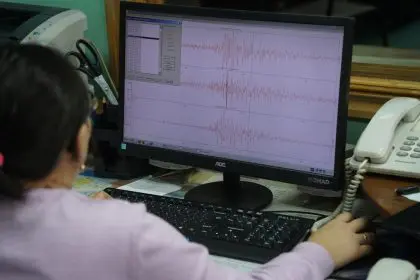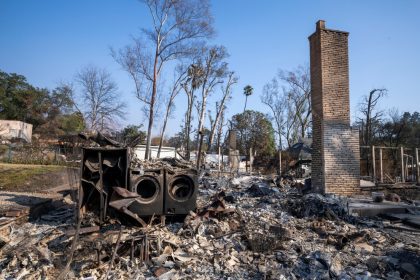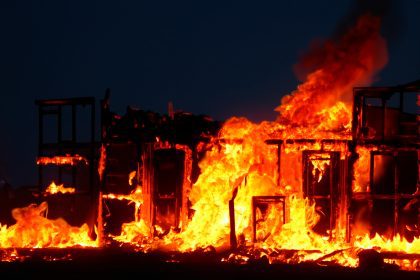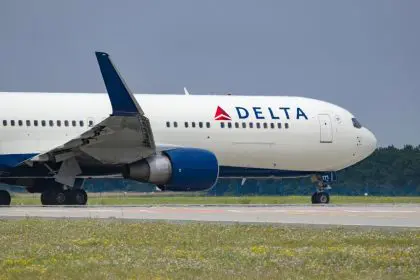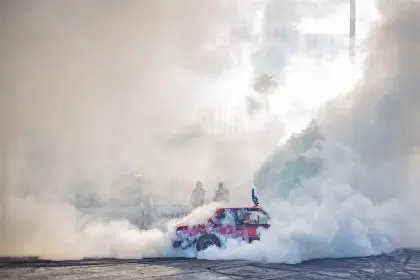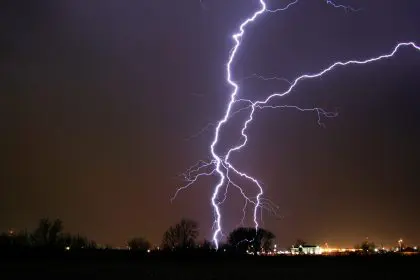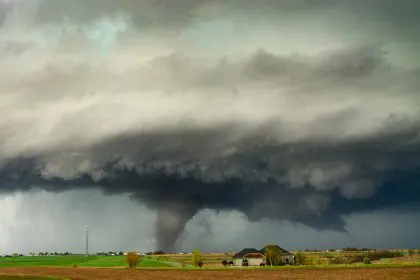A series of devastating wildfires tore through Los Angeles on January 8, 2025, forcing nearly 49,000 residents to abandon their homes as flames engulfed vast stretches of Southern California. Governor Gavin Newsom declared a state of emergency as unprecedented wind conditions continued to fuel the rapid spread of three major fires, marking one of the most significant wildfire events in recent Los Angeles history.
The intensity of these fires has stretched emergency resources to their limits, with firefighting teams working around the clock to protect lives and property. Local authorities report this is the largest coordinated evacuation effort in Los Angeles County since the catastrophic wildfires of 2020.
Three simultaneous infernos
- The Palisades Fire emerged as the largest threat, consuming approximately 3,000 acres after starting as a brush fire on January 7. The blaze prompted the evacuation of 30,000 residents from areas stretching between Merrimac Road and Topanga Canyon Boulevard, extending south to Pacific Coast Highway. Fire officials report the flames have already destroyed 12 structures and damaged another 27 properties in the affected areas.
- The Eaton Fire has burned through roughly 1,000 acres in the Angeles National Forest foothills, threatening communities near Pasadena and Altadena. Local authorities orchestrated the emergency evacuation of several neighborhoods, including a senior living facility where residents required special assistance. The fire’s proximity to densely populated areas has raised particular concerns among emergency response teams.
- The Hurst Fire in Sylmar has already claimed 500 acres, presenting a significant danger to San Fernando Valley communities. Strong winds continue to push the flames toward populated areas near Santa Clarita, prompting additional evacuation orders. The fire’s rapid spread has complicated containment efforts, with firefighters focusing on protecting critical infrastructure and residential areas.
Weather conditions amplify danger
The National Weather Service maintains an active red flag warning through January 9, as extreme weather conditions create perfect conditions for fire spread. Wind gusts reaching up to 100 mph, combined with critically low humidity levels and parched vegetation, have complicated firefighting efforts and contributed to the fires’ rapid expansion. All three blazes remain completely uncontained, raising serious concerns about their potential for further growth.
Meteorologists warn that these dangerous conditions could persist for several days, potentially leading to the development of additional fire hotspots. The combination of high winds and dry conditions has created what fire officials describe as a “perfect storm” for fire propagation.
Transportation system disruption
The wildfires have severely impacted the regional transportation network. Major thoroughfares, including sections of the Pacific Coast Highway and the 10 Freeway, remain closed to non-essential traffic. The Pacific Palisades area experienced significant congestion, resulting in 30 abandoned vehicles along Sunset Boulevard and Palisades Drive.
Air travel faces substantial challenges as smoke and high winds reduce visibility at Los Angeles International Airport and surrounding regional airports. Aviation authorities advise all travelers to verify their flight status and prepare for potential delays or cancellations. The disruption has affected hundreds of flights, with some carriers implementing flexible rebooking policies for affected passengers.
Emergency response mobilization
Governor Newsom has activated extensive resources to combat the fires, securing a Fire Management Assistance Grant from FEMA to support the firefighting effort. CAL FIRE has strategically relocated personnel and equipment from Northern California to reinforce the response capabilities in affected areas.
The coordinated response includes more than 2,500 firefighters, 200 fire engines, and 15 helicopters working to contain the blazes. Military resources have also been mobilized, with California National Guard units providing additional support for evacuation efforts and emergency services.
Impact on local communities
The fires have created unprecedented challenges for Los Angeles residents, particularly in evacuation zones where thousands of families face uncertainty about when they might return home. Local emergency services have established temporary shelters to accommodate displaced residents, while community organizations mobilize to provide essential supplies and support.
Schools within the affected areas have suspended operations, with 47 facilities closing their doors to ensure student safety. Many businesses have also temporarily ceased operations, further disrupting daily life for local communities. The Red Cross and other humanitarian organizations have established emergency shelters at local community centers and schools, providing temporary housing for over 3,000 displaced residents.
Healthcare considerations
Medical facilities across the region have implemented emergency protocols to manage potential respiratory issues caused by deteriorating air quality. Healthcare providers advise residents, particularly those with pre-existing conditions, to remain indoors and use air filtration systems when possible.
Local hospitals report increased emergency room visits related to respiratory complaints, with particular concern for vulnerable populations such as the elderly and young children. Public health officials have issued advisories recommending the use of N95 masks for those who must venture outdoors.
Economic implications
The wildfires pose significant economic challenges for the region, affecting businesses, property values and insurance markets. Early estimates suggest substantial financial impact, though precise figures remain difficult to determine while the fires continue to spread.
Insurance companies anticipate a surge in claims, while local businesses face extended closures during the emergency. The tourism industry, already preparing for peak season, braces for potential long-term impacts as popular destinations face fire damage and access restrictions.
Long term environmental concerns
Environmental experts warn about the lasting impact of these fires on local ecosystems and air quality. The unprecedented scale of the blazes raises questions about climate resilience and future wildfire prevention strategies in Southern California.
Scientists monitoring the situation emphasize the need for enhanced forest management practices and improved urban planning to mitigate future fire risks. The fires have also prompted renewed discussions about climate change adaptation strategies for vulnerable communities in fire-prone areas.
Community resilience and recovery
Despite the overwhelming challenges, Los Angeles communities have demonstrated remarkable solidarity in response to the crisis. Numerous volunteer organizations have emerged to support evacuation efforts and provide assistance to affected residents. Local businesses and community centers outside the evacuation zones have opened their doors to displaced families, offering temporary shelter and resources.
Recovery planning has already begun, with local authorities assembling teams to assess damage and develop rehabilitation strategies for affected areas. Environmental specialists will play a crucial role in evaluating the fires’ impact on local ecosystems and developing restoration plans for damaged natural areas.

